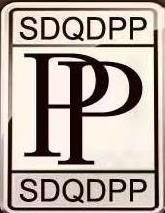How to Choose the Right Temporary Floor Protection Roll for Your Project
When it comes to protecting your floors during a construction or renovation project, temporary floor protection rolls are an ideal solution. These rolls provide a protective barrier between your floors and the construction materials, helping to keep them safe from damage. However, with so many different types of temporary floor protection rolls available, it can be difficult to know which one is right for your project. Here are some tips to help you choose the right temporary floor protection roll for your project.
First, consider the type of floor you are protecting. Different types of flooring require different types of protection. For example, hardwood floors require a different type of protection than tile or carpet. Make sure to choose a roll that is designed for the type of floor you are protecting.
Next, consider the size of the area you are protecting. Temporary floor protection rolls come in a variety of sizes, so make sure to choose one that is large enough to cover the entire area. If you are unsure of the size, measure the area before you purchase the roll.
Finally, consider the type of protection you need. Some rolls are designed to provide a basic level of protection, while others are designed to provide more advanced protection. If you are working on a large project, you may want to choose a roll that provides more advanced protection.
By following these tips, you can ensure that you choose the right temporary floor protection roll for your project. With the right roll, you can protect your floors from damage and keep them looking great for years to come.
The Benefits of Using Polyester Felt and Acrylic Felt Rolls for Floor Protection
Polyester felt and acrylic felt rolls are two of the most popular materials used for floor protection. Both materials offer a variety of benefits that make them ideal for protecting floors from damage.
Polyester felt is a durable material that is resistant to wear and tear. It is also highly absorbent, making it an excellent choice for protecting floors from spills and other liquids. Additionally, polyester felt is easy to clean and maintain, making it a great choice for busy households.
Acrylic felt rolls are also a great choice for floor protection. They are lightweight and flexible, making them easy to install and remove. Acrylic felt rolls are also highly resistant to water and other liquids, making them an ideal choice for protecting floors from spills and other liquids.
Both polyester felt and acrylic felt rolls are also highly affordable, making them a great choice for those on a budget. They are also available in a variety of colors and patterns, allowing you to customize the look of your floor protection.
Overall, polyester felt and acrylic felt rolls are two of the best materials for floor protection. They are durable, absorbent, easy to clean, and affordable. They are also available in a variety of colors and patterns, allowing you to customize the look of your floor protection. With these benefits, it is easy to see why polyester felt and acrylic felt rolls are two of the most popular materials used for floor protection.
Understanding the Manufacturing Process of Temporary Floor Protection Rolls from Chinese Factories
Temporary floor protection rolls are an essential part of any construction or renovation project. They provide a protective layer between the floor and any debris or materials that may be present during the project. The manufacturing process of these rolls is complex and involves several steps.
The first step in the manufacturing process is the selection of the raw materials. The most common materials used for temporary floor protection rolls are polyethylene, polypropylene, and polyvinyl chloride. These materials are chosen based on their durability, flexibility, and cost. Once the raw materials are selected, they are cut into the desired size and shape.
The next step in the manufacturing process is the printing of the rolls. This is done using a variety of methods, including screen printing, digital printing, and rotogravure printing. The printing process is used to add logos, text, and other designs to the rolls.
The third step in the manufacturing process is the lamination of the rolls. This is done by applying a thin layer of adhesive to the rolls and then pressing them together. This helps to create a strong bond between the layers and ensures that the rolls are durable and long-lasting.
The fourth step in the manufacturing process is the packaging of the rolls. This is done by wrapping the rolls in plastic and then sealing them in boxes or bags. This helps to protect the rolls from damage during shipping and storage.
Finally, the rolls are shipped to their destination. Chinese factories are known for their efficient and cost-effective manufacturing processes, which makes them a popular choice for many companies. By understanding the manufacturing process of temporary floor protection rolls from Chinese factories, companies can ensure that they are getting the best quality product at the most competitive price.
